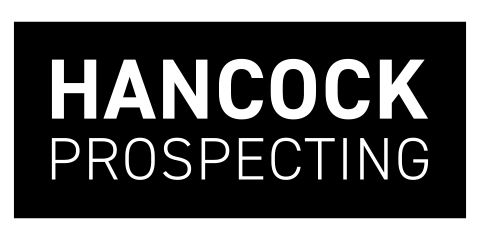
Article by Mark lawson courtesy of Spectator Australia.
The events of the past few weeks have brought Australia’s energy future into sharp focus – we won’t have one. Green enthusiasts who dominate the public debate have insisted that much of the east coast’s reliable power supply must cease operating by about the middle of next decade, but there may not be anything to put in its place.
Those same activists insist that a vast network of renewable energy projects can take over the role of coal plants, ignoring considerable evidence that they cannot. However, state governments are relying on private investors to create this dense network, despite investment in the area having tanked.
Unless policymakers come to their senses, consumers who want to use electrical appliances, or even turn on the hall light in perhaps twelve years or so, may have to make their own arrangements. They might still be able to turn on gas stoves but not gas heaters (these still require power for fans), although policymakers are also doing their best to reduce gas supplies.
This heroic attempt at ruining Australia’s power supply is all the more remarkable for occurring during an international energy crisis and with the policymakers apparently oblivious to the notable failure of renewable energy to make much of a contribution to the overall energy supply, despite decades of investment.
As previously noted in The Spectator Australia (‘Engineering disaster’, 29 October 2022) a combination of billionaire activist Mike Cannon-Brookes and the state governments of Queensland and Victoria have organised the closure of the bulk of the reliable coal-fired power supply of the eastern half of the continent. At the same time the Victorian and Queensland state governments in particular, have been encouraging investment in renewable energy as well as pumped-hydro storage projects.
To date the response has been disappointing. Figures on renewable energy projects compiled by the Clean Energy Council show that just seventeen were completed and commissioned in 2022, representing 1,248 Megawatts (MW) of installed capacity, as opposed to forty-eight completed in Covid-stricken 2021 adding up to 4,589 MW, and 3,205 MW worth of projects in 2020. These figures are even less impressive when it is remembered that wind projects typically have an average output of about one-third of stated capacity. The average output for photovoltaics is somewhat less, but it is better for projects using the likes of solar concentrators.
There is no indication investment is improving. Wind farms under construction listed by the Victorian Department of Transport and Planning amount to just 864 MW in installed capacity – an effective average output of perhaps a paltry 300 MW or so.
One reason for investment in this area falling off a cliff, despite all the talk, is that markets did not do well generally in 2022. A count of initial public offerings on the securities exchange by professional services firm HLB Mann Judd shows that the number of new IPOs fell by 48 per cent in 2022, and total funds raised collapsed 91 per cent.
Another perspective is provided by lobby group WindEurope, which in January declared that orders for new wind turbines in Europe fell by 47 per cent, or nearly half, in 2022 compared with the previous year.
WindEurope complained about government interference in the European markets, but also noted that ‘inflation in commodity prices and other input costs has raised the price of wind turbines, by up to 40 per cent over the last two years’. Revenue had not kept pace with costs.
Despite the different conditions in Europe, the result was much the same as the investment market in general and renewable energy projects in Australia in particular, in that investment collapsed notably in the second half of 2022.
But then decades of talk about renewable energy and investment in all sorts of wild and wonderful projects has barely shifted the dial on renewable energy’s contribution. A control panel for the National Energy Market (the eastern Australian grid) compiled by the Australian Energy Market Operator shows that in the past 12 months just short of 70 per cent of electricity came from black and brown coal plants, and just short of 20 per cent from solar and wind. Another 7 per cent came from hydro (which counts as a renewable) and a few per cent from gas.
This does not seem very different from the energy mix of preceding years, but the really bad news for activists is the total energy mix figures for Australia compiled by the International Energy Agency. This analysis adds in the use of fuel in domestic and freight transport, gas for cooking and industrial use plus the power required for electrical generation. In 2021, despite all the talk about net-zero emissions, wind, solar and biomass collectively amounted to just a few per cent of the total energy task.
As for gas, the Australian Competition and Consumer Commission released a gas inquiry interim report in January which forecasts a 12 per cent shortfall in supply for the east coast this year, although the problems may really start about 2027 or so. The commission then makes the far from surprising suggestion that governments could reduce the barriers faced by producers seeking to bring new gas supply to market.
But governments and environmentalists have reacted to the obvious problems by doubling down on discouraging the industry. The federal government reacted to price increases for gas by instituting a mixture of price controls and reserving gas for domestic consumers. As a result, producers including Senex Energy, Beach Energy, Cooper Energy and ExxonMobil have stalled or put under review proposed investment in new gas supplies.
In addition, environmental activism and the late-2022 court decision which required Santos to consult more extensively with indigenous groups over the $4.7 billion Barossa project it plans north of the Tiwi Islands (north of Darwin), have imposed delays of up to two years on a range of gas projects. To top off all of this, a project to build an LNG gas import terminal at Newcastle in NSW, which could have supplied 80 per cent of the state’s needs, was axed in early February, with the South Korean developers citing volatility in gas markets. Another proposed LNG import plant in Victoria is facing endless delays in approvals.
Investment in green energy projects may revive of course, but there is a long way to go and there are still the major problems of whether intermittent power can replace coal plants, and of dismantling all the barriers blocking gas development. Australia’s much-vaunted energy transition may simply mean switching to no power at all.




